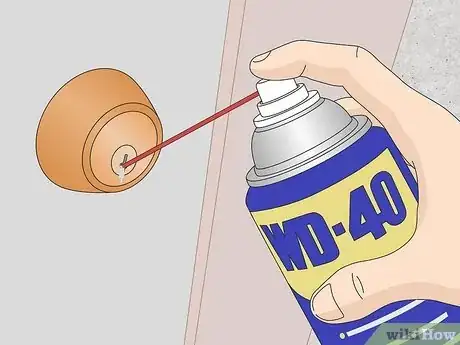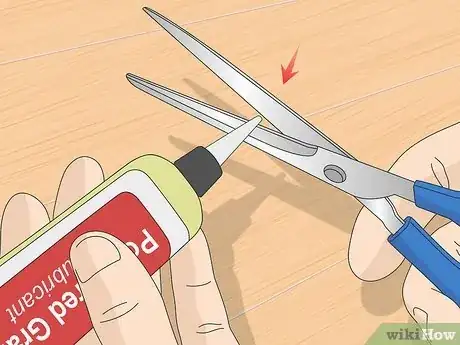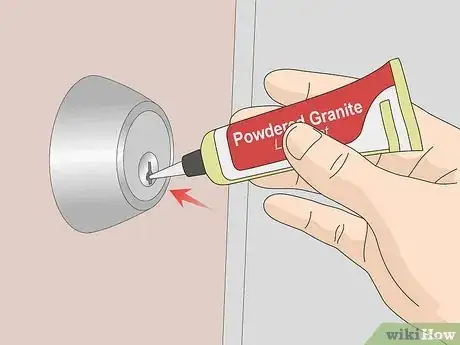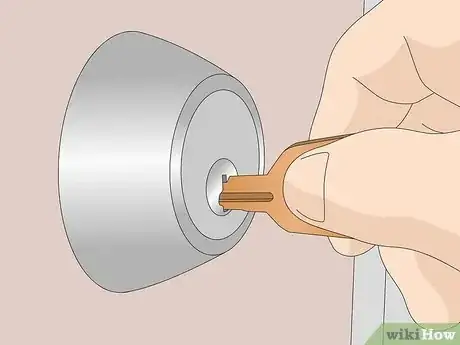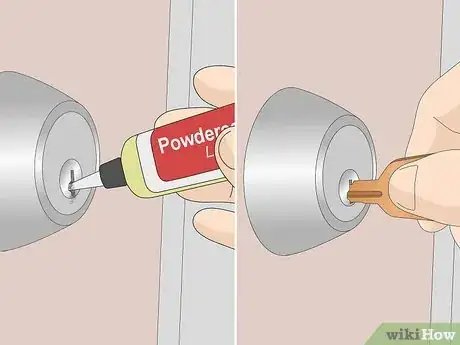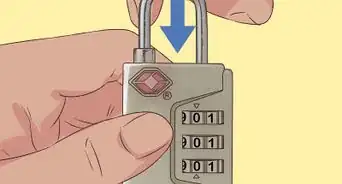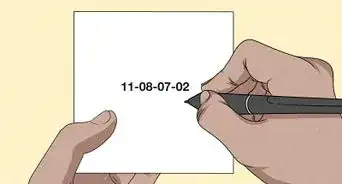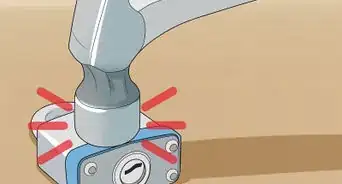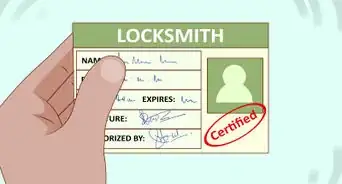This article was co-authored by Ryaan Tuttle. Ryaan Tuttle is a Home Improvement Specialist and the CEO of Best Handyman, Inc. in Boston, Massachusetts. With over 17 years of experience, he specializes in building home service businesses, focusing on creating scalable and efficient brands. With the help of his global team, the companies have achieved over 10+ million in sales and received recognition through magazine features, and enjoy partnerships with wikiHow and Jobber field service software. Boston Magazine and LocalBest.com have named Best Handyman Boston the Best Handyman in Boston. Ryaan holds Construction Supervisor and Home Improvement Contractor Licenses.
There are 7 references cited in this article, which can be found at the bottom of the page.
wikiHow marks an article as reader-approved once it receives enough positive feedback. In this case, several readers have written to tell us that this article was helpful to them, earning it our reader-approved status.
This article has been viewed 430,033 times.
After enough use, you might find that your door lock has begun to “stick,” making it difficult to put in, turn or pull out your key. This occurs when dust, dirt, grime and other buildup accumulates on the internal mechanisms that control the movement of the lock. Sticky locks can be extremely frustrating, and it’s likely the last thing you want to deal with when you’re coming home at the end of a long day. Luckily, it only takes one or two inexpensive products and a couple of minutes to get your lock moving smoothly again.
Steps
Spraying the Lock with WD-40
-
1Buy a can of WD-40. Run down to your local hardware store and purchase a can of WD-40. WD-40 is a common household lubricating oil that can be used on everything from bicycle chains to door hinges. If your lock isn’t in real bad shape, a little squirt of WD-40 will probably be all you need.[1] [2]
- WD-40 is generally a great product to have on hand whenever there’s an immediate need for an all-purpose lubricant, although it will eventually dry out and need to be reapplied.
- Avoid using any lubricants that aren’t appropriate for home improvement use, such as cooking, botanical or sewing machine oil. Most oils will just attract dust that then forms new layers on the locking mechanism, making the problem worse.
-
2Attach the applicator straw to the nozzle of the can. Hook up the red applicator straw that comes included with the can of WD-40. These straws are thin and flexible and fit right over the opening of the nozzle where the oil comes out. The addition of a straw will allow you to penetrate deep into the inner workings of the lock, lubricating it more effectively.
- Some newer containers of WD-40 feature permanently-attached straws. Keep an eye out for these, as they’re just what you need.[3]
- A straw will also keep the spray of the lubricant confined inside the lock where you want it, rather than all over your front door.
Advertisement -
3Insert the straw into the opening of the lock. Place the end of the straw into the opening of the lock where you normally insert your key. Guide the straw as far in as you can to make sure you’re hitting every part of the locking mechanism that might be sticking with the WD-40.
-
4Spray the WD-40 into the lock.[4] Press down on the button on the rear of the WD-40 canister to begin releasing the lubricant into the lock. Don’t be afraid to use a liberal amount of oil—a sticky lock needs the attention. Hold down the spray button until the WD-40 begins to overflow from the lock opening.[5]
- Wearing gloves while handling lubricants can help prevent a slippery mess.
-
5Test the lock. Let the WD-40 sit for a few minutes. This will give it a chance to start breaking down the dust and dirt accumulated inside the lock that’s impairing its movement. Once it’s had some time to set up, slide your key in and out of the lock a few times and observe how smoothly it moves. If it doesn’t meet resistance, your work is done. If the lock still sticks a bit, you may need to try a more heavy-duty lubricant such as powdered graphite.[6]
- Make sure you’ve properly coated each part of the locking mechanism by running through the locking and unlocking action a few times. After you've applied WD-40 to the lock, the interior pins should disengage with no resistance and the cylinder should easily rotate when you turn your key.
- Lubricate the locks around your home with WD-40 regularly to keep them maintained.
Lubricating the Lock Using Powdered Graphite
-
1Get a tube of powdered graphite. Powdered graphite is a special dry lubricant that can be found in most hardware or department stores. It is designed to encourage smooth movement between two metal surfaces without attracting grime, which means it won’t gum up like oil-based lubricants. If your lock is so sticky that you can barely get your key in and out, you may need something as tough as powdered graphite.[7]
- Once applied, the graphite particles form a fine layer on the surface of the metal, lubricating and “brushing” away dust and dirt.
- A small container of powdered graphite can be purchased in most places for as little as $2.
-
2Cut the plastic tip off the end of the bottle. Most containers of powdered graphite have a solid plastic film covering the tip that will need to be removed prior to use. Take a utility knife or sharp pair of scissors and snip the plastic off the end of the nozzle. Be sure to make a large enough opening that the graphite can flow freely.[8]
-
3Hold the tip of the bottle up to the lock. Place the end of the nozzle up to the opening of the lock. Depending on the size of the bottle, you may be able to actually fit the nozzle part of the way inside the opening. If not, just hold it flush to the lock. It should still be able to penetrate deep enough to lubricate the locking mechanism.[9]
- Make sure you’re holding the bottle level so that graphite doesn’t escape around the opening.
- Consider covering the area of your door around the lock to guard it from stray graphite particles
-
4Inject some powdered graphite into the lock. Squeeze the bottle gently to release a few puffs of powdered graphite into the lock. Try not to use an excessive amount—graphite is a potent substance, so a little bit will go a long way. Allow the graphite to start working on the lock for a minute or two.[10]
- Start by using a little bit of lubricant and apply more if the lock still sticks.
- Handle powdered graphite carefully. Otherwise, the fine black dust can get everywhere, staining surfaces and creating a big mess.
-
5Try your key in the lock. Test the lock by inserting and removing your key once or twice. You shouldn’t have any trouble getting it in and out of the lock now. Turn the key in both directions to see how fluidly it moves.[11]
- Sliding your key in and out of the lock will help spread the graphite around inside to the place where it most needs to be.
-
6Repeat as needed. If the lock still feels a little sticky, hit it again with a few more blasts of powdered graphite. Test the lock after each application. Once the graphite has distributed through the lock, it will begin to clear away the gunk that’s been hindering the lock’s movement, leaving you with a fully functioning, hassle-free door.
- For especially stubborn locks, try squeezing a little graphite onto the door’s latch as well. This is the part of the locking mechanism that moves in and out of the door frame when you turn the knob. Lubricating the latch can help ease the keying action.[12]
- If you still don’t have any luck after trying powdered graphite, call a professional locksmith to come out and take a look at your locks. Sometimes the problem is with the pins inside the lock slipping down and loosening, which can't be fixed with just lubricant.
Expert Q&A
-
QuestionHow do I get a key out of a sticky lock?
 Mark SpelmanMark Spelman is a General Contractor based in Austin, Texas. With over 30 years of construction experience, Mark specializes in constructing interiors, project management, and project estimation. He has been a construction professional since 1987.
Mark SpelmanMark Spelman is a General Contractor based in Austin, Texas. With over 30 years of construction experience, Mark specializes in constructing interiors, project management, and project estimation. He has been a construction professional since 1987.
Construction Professional Try to wiggle it back and forth, then grab the key with a vise grip tool and pull.
Try to wiggle it back and forth, then grab the key with a vise grip tool and pull.
Warnings
- Graphite can have a mild corrosive effect on galvanized aluminum. Double check to make sure no part of your lock or door frame is aluminum before using powdered graphite on it.⧼thumbs_response⧽
- Take caution when using knives or scissors to prevent injury.⧼thumbs_response⧽
- Use powdered graphite sparingly. Graphite tends to be overused, and will eventually start to cake onto a lock, making it harder to operate. After a few years liquid graphite gets gummy and if you use WD-40 on it, it loosens up the liquid graphite.⧼thumbs_response⧽
- Be careful not to inhale graphite particles. This could lead to illness or infection.⧼thumbs_response⧽
- Working with powdered graphite can get messy. Keep this in mind when using it to bust a sticky lock.⧼thumbs_response⧽
Things You'll Need
- WD-40 Lubricating Oil
- Attachable nozzle straw
- Powdered graphite solution
- Utility knife or scissors
- Work gloves and/or spare rag (optional)
References
- ↑ Ryaan Tuttle. Home Improvement Specialist. Expert Interview. 13 January 2021.
- ↑ http://www.dummies.com/home-garden/home-improvement/doors/how-to-lubricate-a-door-lock/
- ↑ http://www.familyhandyman.com/diy-advice/wd-40-ez-reach-can-handle-any-job
- ↑ Ryaan Tuttle. Home Improvement Specialist. Expert Interview. 13 January 2021.
- ↑ https://www.youtube.com/watch?v=Kz1G4qGbRAo
- ↑ http://www.dummies.com/home-garden/home-improvement/doors/how-to-lubricate-a-door-lock/
- ↑ http://www.todayshomeowner.com/fth/lubricating-sticky-door-locks-in-your-home/
- ↑ https://rentpost.com/blog/advice/how-to-fix-a-sticky-lock/
- ↑ http://www.todayshomeowner.com/fth/lubricating-sticky-door-locks-in-your-home/
About This Article
To fix a sticky lock, go purchase a can of WD-40 from your local hardware store. To use it, you may need to attach the applicator straw to the nozzle of the can, if it's not already attached. Put on some gloves before you start spraying it because WD-40 can make a mess. Then insert the straw on the can into the lock and spray in a liberal amount of WD-40. Let it sit for a few minutes and then test your lock with a key to see if it worked. For instructions from our Contractor reviewer on how to use powdered graphite to fix a lock, read on!




